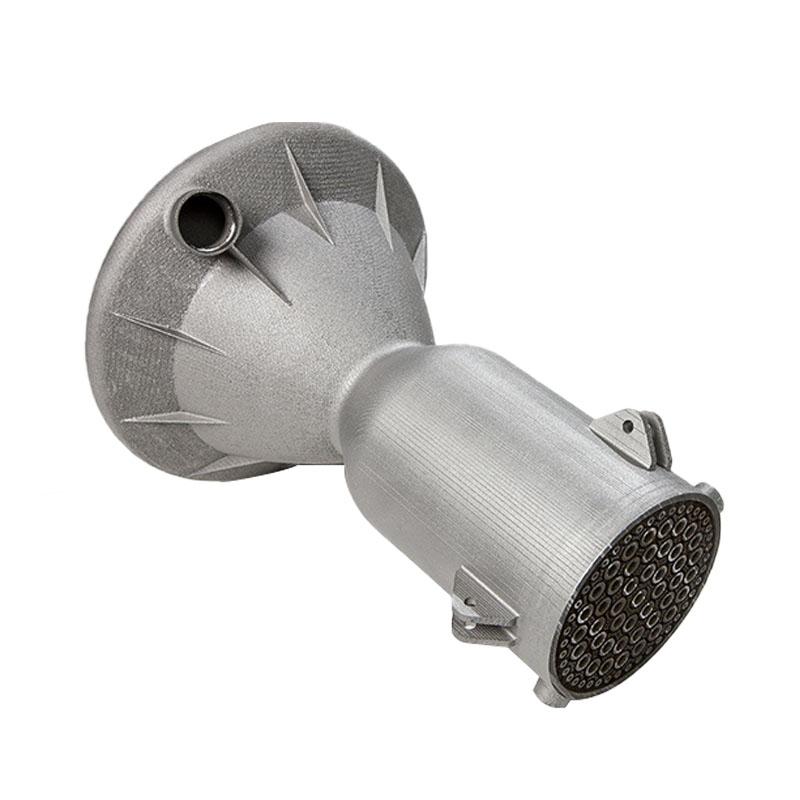Direct ink writing technology enables the use of 2DMXenes to build 3D structures for electrochemical energy storage (EES) devices that are often difficult to achieve using conventional techniques. However, in order to meet the specific rheological requirements of 3D printing, a large amount of MXene is required in the ink, which leads to a severe self-packing structure after drying.

A variety of 3D buildings with excellent shape fidelity and geometric accuracy were successfully printed at low solids using an optimized hybrid ink, resulting in free-standing, hierarchically porous structures after freeze-drying, which improved surface area availability, ion transport efficiency and ultimately improved capacitive performance. The solid-state interdigitated symmetric supercapacitor delivers 2.02F cm-2 areal capacitance and 101 uWh cm2 energy density at a power density of 0.299 mW cm2, and maintains 85% capacitance retention after 5000 cycles. This work demonstrates the integrated process of 1D CNFS and 2DMXene in 3D printing technology to prepare customized, multiscale and multidimensional architectures for next-generation EES devices. A related article is published in Advanced Functional Materials under the title "3D Printed Ti3C2TxMXene/Cellulose Nanofiber Architectures for Solid-State Supercapacitors: Ink Rheology, 3D Printability, and Electrochemical Performance".
Figure 1. Schematic diagram of the fabrication strategy for free-standing, layered porous MXene/CNF 3D architecture and symmetric interdigital supercapacitor 3D printing: a) from oil through a series of steps including hot water, NaClO2 and NaOH treatment, TEMPO oxidation and ultrasonic treatment 1D CNFs were extracted from palm tree trunks. b) 2D MXene nanoflakes were fabricated by mild etching, followed by sonication. c) Preparation of MXene/CNF ink and evaluation of its rheological properties.
Figure 2. Characterization of CNF and MXene: Transmission electron microscopy images of a) 4-CNF, b) 6-CNF, c) 8-CNF, d) 10-CNF and e) MXene. f) HRTEM image of MXene. g) Carboxylic acid content and Zeta potential of different CNFs. h) The viscosity of different CNF suspensions with a concentration of 4 wt% at a shear rate of 102 s1. i) Viscosity of 8-CNF suspensions as a function of shear rate at different concentrations from 0.5 wt% to 6 wt%.
Figure 3. Rheological properties and 3D printing performance of MXene/CNF gel inks: a) Schematic illustration of the rheological properties required for 3D printable gel inks. b) Viscosity as a function of shear rate. c) Shear stress is a function of shear rate and the curve obeys a power law. d) The evolution of viscosity with time under alternating action of low shear rate (102s1) and high shear rate (102s1).
Figure 4. Morphology and chemical structure of 3D-printed, freeze-dried MXene/CNF10 blocks: a) Top-view SEM image. b, c) Magnified SEM images, corresponding to the red and yellow borders in panel (a), respectively. d) Side-view SEM image. e) Magnified SEM image corresponding to the red boxed portion in panel (d). f) Cross-sectional SEM image. g) Corresponding EDS mapping of Ti, C, O and F elements.
Figure 5. Electrochemical performance of 3D-printed, freeze-dried MXENE/CNF10 blocks in 1M H2SO4 electrolyte: a) Cyclic voltammetry rods at different scan rates (10-50 mV s-1). b) GCD appears at different current densities (1-20 mA cm2). c) Area capacitance and specific capacitance at different current densities. d) Nyquist plot. e) Logarithmic plot of peak current as a function of scan rate. f) CV appears at 50 mV s1, and the blue area represents the contribution of surface capacitance.
Figure 6. Electrochemical performance of symmetric supercapacitor devices: a) Pictures of the fabrication process. B) Cyclic voltammetry traces at different scan rates in the range of 5 to 100 mV s1; c) GCDs at different current densities in the range of 1 to 20 mA cm2; d) Areal and specific capacitances. e) Cycling performance of the solid state relay measured at 20 mA cm2. f) Ragone plot comparing the device of this paper with other reported devices in terms of energy and powder density.
In summary, this paper successfully improves the 3D printing performance of MXene-based inks at low MXene loadings by rationally controlling the size and surface chemistry of CNFs during TEMPO-mediated oxidation. In addition to rheological modification, CNFS also acted as an intercalating agent, preventing the normal stacking of MXene nanosheets, resulting in the formation of a highly free-standing, hierarchically porous structure after freeze-drying. This well-designed porous structure is associated with the high electrical conductivity of MXene, allowing fast electron conduction and ion diffusion, resulting in good capacitance and rate performance. The MXene/CNF ink developed in this paper has excellent rheological and 3D printing properties, and can be used to fabricate other energy storage and conversion devices that require carefully tailored structural designs. (Text: SSC)
This article is from the WeChat public account "Material Science and Engineering". Welcome to reprint, please contact, please do not reprint to other websites without permission.